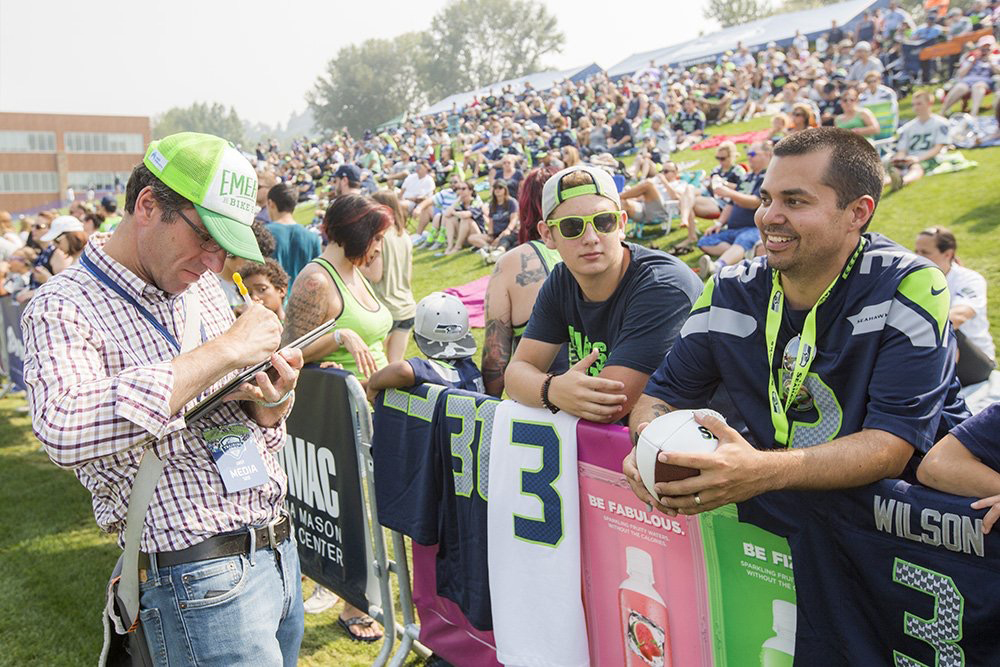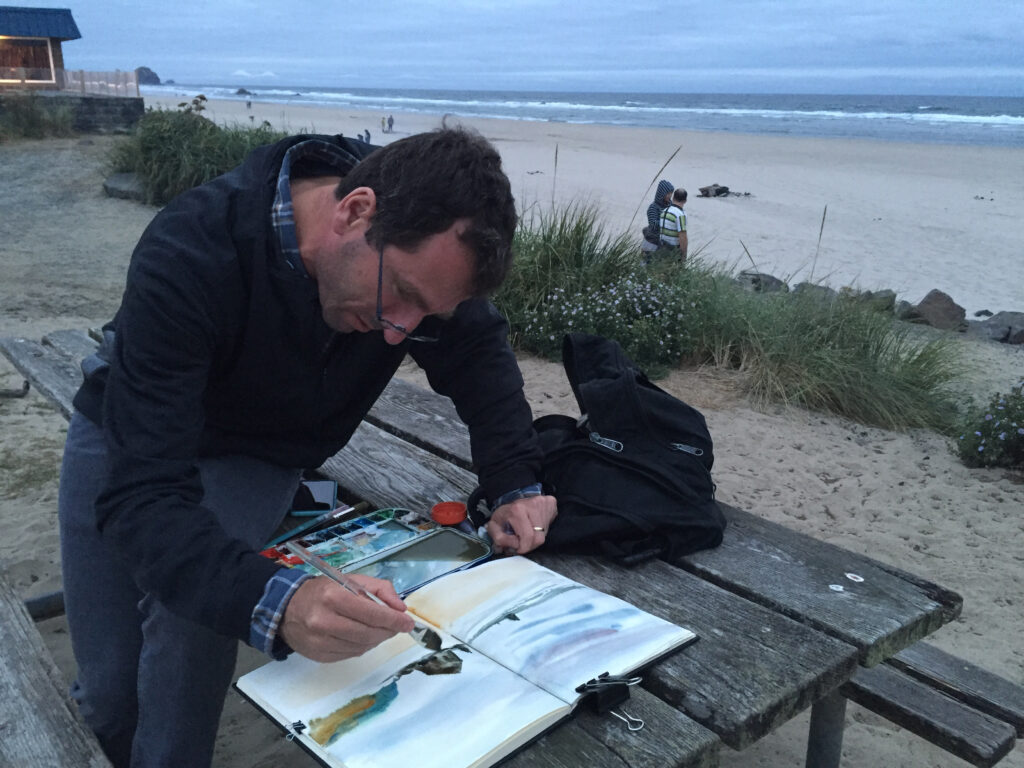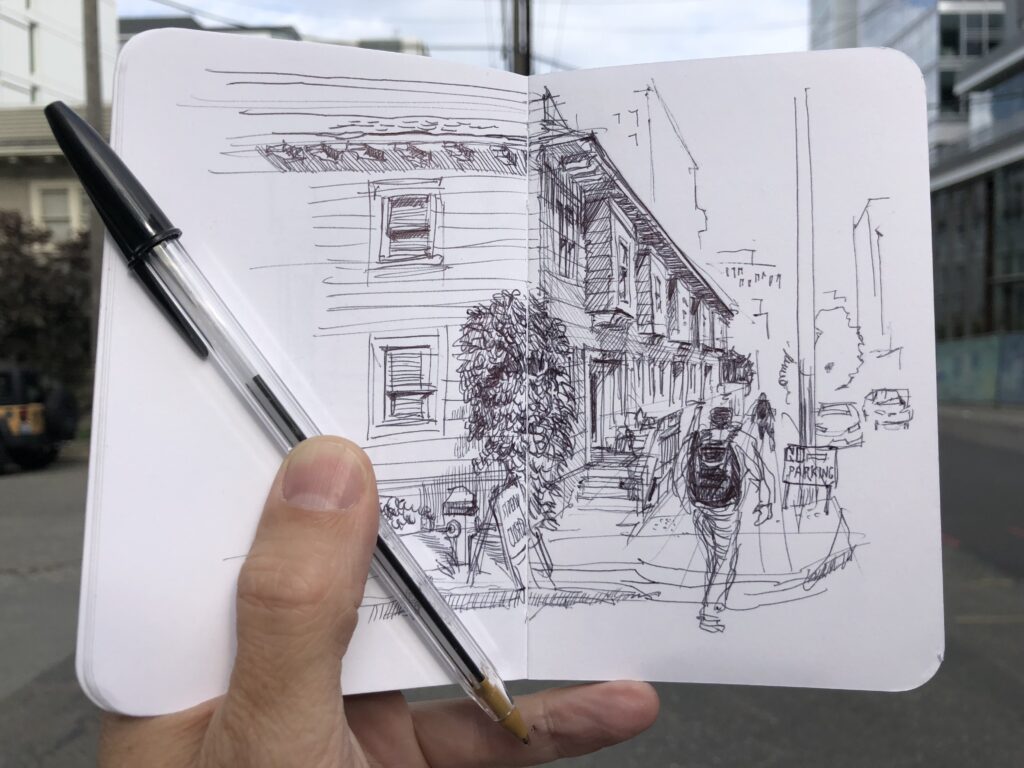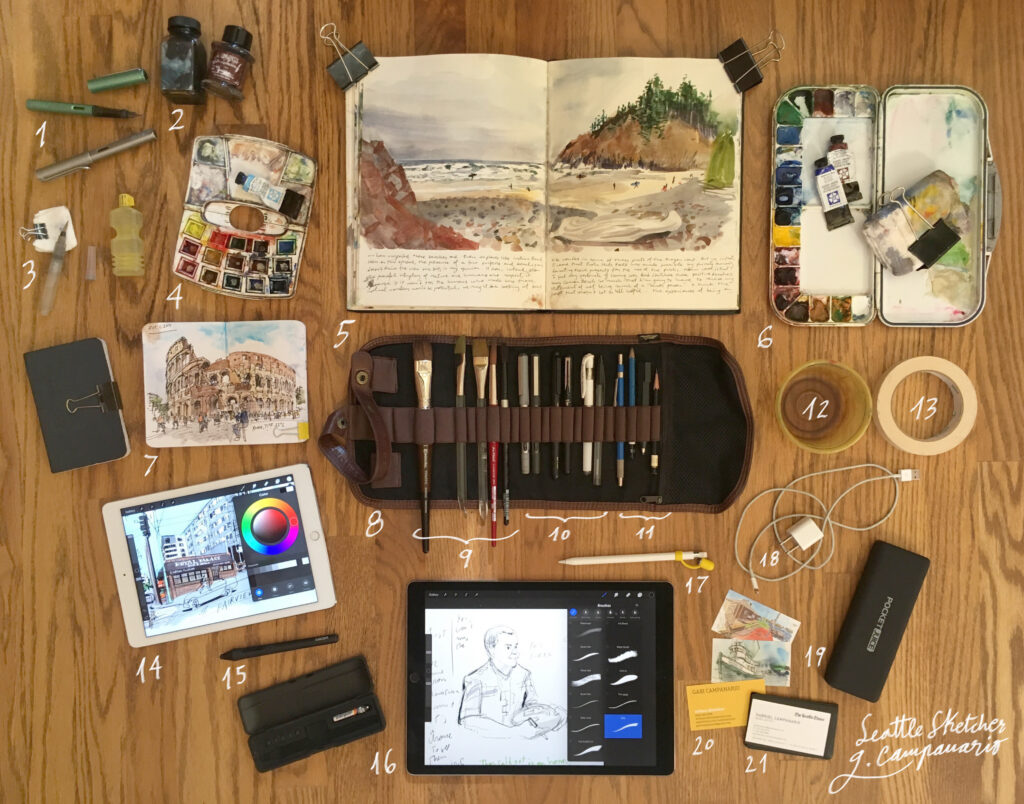
What type of pen do you use to sketch? It’s a common question among artists and drawing enthusiasts. If you follow my work, you may also be curious about the tools I use.
My answer to the “pen question,” as I like to call it, has changed over the years. When I started out, I used Pigma Micron fineliners, especially the 0.8mm pen. It was a short-lived affair, though. I’ve been using Lamy Safari fountain pens for a long time now. Depending on how much you flex or tilt the nib, you can make much more expressive lines with a fountain pen.
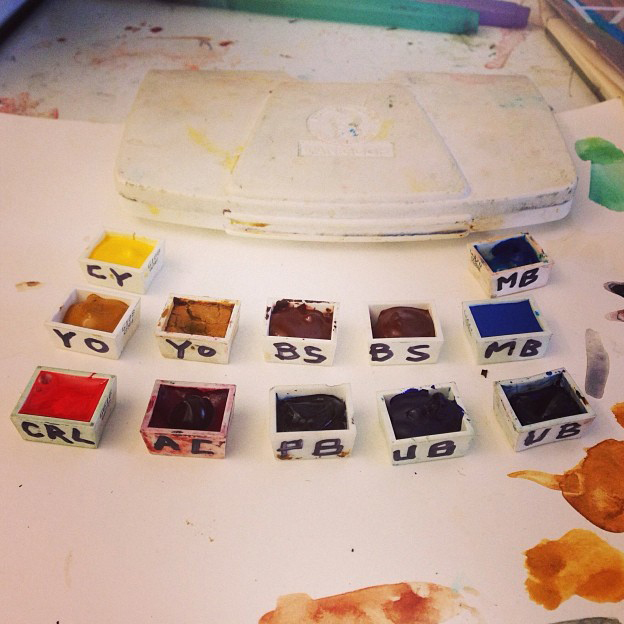
My watercolor kits and brushes have also evolved. A 12-color set by Winsor & Newton and Niji waterbrushes got me going at first. But once I discovered tube watercolors, especially those by the legendary Seattle brand Daniel Smith, and the benefits of regular watercolor brushes, I never looked back: I only carry one small waterbrush just in case.
When it comes to sketchbooks and paper, I’ve used too many to list. Pocket-size notebooks have been a favorite since I bought my first one, a Moleskine, in 2005. For a while, I did a lot of my Seattle Sketcher work on Fabriano Studio Watercolor pads. The best watercolor paper I’ve ever worked on, however, has to be Arches, which you can get in large, 22-by-30-inch sheets and cut into smaller pieces. Of any watercolor paper, I tend to choose hot-pressed because the smoother surface is easier on the fountain pen.
At the moment, all my sketching gear is streamlined for two different purposes. My large and pocket-size Stillman and Birn sketchbooks are mainly for fun and travel. I like the heavy paper on the Delta and Zeta Series because it takes watercolor really well. For work, and sometimes for fun and travel too, I switched to digital tools last summer, first using an iPad Air 2 and a Wacom Intuos Stylus. More recently, I’ve used an iPad Pro and Apple Pencil I received from Apple under a loan program offered to selected artists interested in testing the device.
The contents of my sketching bag will likely continue to change, but I hope the information included in this post addresses the pen question for the time being. What else can I say? I hope you’ll be inspired to do more sketching on your own, and thank you for asking!
P.S.: Below are some behind-the-scenes shots putting my sketching tools to work.
